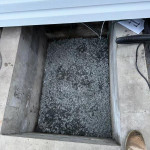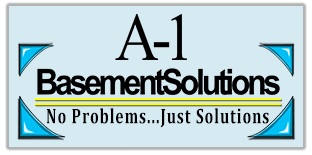You’re considering waterproofing your basement, you’re researching methods, and you’re keen to protect your home. Yet, did you know that the role of drainage systems in this process is often overlooked? These unsung heroes redirect water away from your foundation, prevent water accumulation, and curtail hydrostatic pressure. But how do these systems really work? What are the different types and how do you choose the right one for your home? And once installed, how do you maintain them? There’s a wealth of knowledge to uncover here, so let’s get started.
Understanding Basement Waterproofing
In light of basement waterproofing, it’s important to understand the intricacies involved. You might think it’s a simple process, but it’s far from it. It’s not just about stopping water from getting in—it’s an all-encompassing approach to maintaining the structural integrity of your basement.
Firstly, you need to evaluate the type of soil surrounding your foundation. Clay soil, for instance, expands when wet and can exert pressure on your foundation walls, leading to cracks. Sandy soil, on the other hand, allows water to drain quickly, but can cause erosion around the foundation.
Next, assess the grade of your property. If your home is at the lowest point of your property, rainwater will naturally flow towards it, increasing the chances of basement leaks. You’ll need to guarantee proper grading away from your foundation.
Also, you need to inspect your gutters and downspouts. If they’re not functioning properly, they may be directing water towards your foundation instead of away from it.
Furthermore, evaluate the state of your foundation walls. Cracks not only let water in, but also compromise structural integrity. Waterproofing methods like sealants and membranes can be applied to repair and prevent such damages.
Importance of Drainage Systems
Effective drainage systems play an essential role in basement waterproofing. They’re pivotal in preventing water accumulation, which can lead to significant issues such as structural damage, mold, and mildew. Even minor water seepage can escalate quickly if not appropriately managed.
Without a proper drainage system, water pressure builds up against the basement walls and floor, intensifying the risk of cracks and leaks. This hydrostatic pressure can compromise the integrity of your basement and, if left unchecked, your entire home. That’s why it’s vital to implement a robust drainage system.
Drainage systems also help maintain a healthy living environment. Excess moisture can lead to the growth of mold and mildew, which can cause health issues like allergies and respiratory problems. By controlling the moisture levels in your basement, you’re ensuring a safe and healthy space for your family.
Moreover, a well-functioning drainage system enhances your property’s value. Potential buyers often consider the soundness of the basement as a critical factor, making a reliable drainage system an investment that pays dividends.
In essence, the importance of drainage systems in basement waterproofing can’t be overstated. It’s a preventative measure that safeguards your home’s structural integrity and contributes to your well-being.
Types of Basement Drainage Systems
As you consider basement waterproofing, understanding the types of drainage systems is essential.
Two primary systems, Interior Drainage Systems and Exterior Drainage Systems, offer unique advantages and challenges.
Let’s examine each of these in detail to determine which might best serve your basement’s specific needs.
Interior Drainage Systems
Your home’s interior drainage system is a vital component in basement waterproofing, one that mustn’t be overlooked. It’s designed to manage water that makes its way into your basement, redirecting it away from vulnerable areas. When properly installed and maintained, this system can protect your basement from water damage and mold growth.
There are several types of interior drainage systems, but they all work on the same basic principle. A trench is dug around the perimeter of your basement, at the foot of the foundation. This trench is then filled with a pipe, often a perforated one, which carries water away from your home. This pipe is connected to a sump pump, which pumps the water outside.
The effectiveness of your interior drainage system depends on several factors. The slope of your basement floor, the type of soil around your home, and the amount of rainfall in your area can all impact how well the system works.
It’s essential to work with a professional who can accurately assess these factors and design a system that suits your home’s specific needs. Regular maintenance is also necessary to keep the system working efficiently.
Exterior Drainage Solutions
Basement’s exterior drainage solutions serve as your home’s first line of defense against water intrusion. These systems are designed to collect and divert water away from your foundation before it has a chance to infiltrate your basement.
Two common types of exterior solutions are footing drains and French drains. Footing drains, also known as perimeter drains, are installed at the base of your home’s foundation. They’re typically constructed of perforated pipe that’s covered in gravel and filter fabric. The pipe collects water and directs it away from your home.
French drains, on the other hand, are slightly sloped trenches filled with a layer of gravel and pipe that diverts water away from your home. They’re often installed at the perimeter of your property rather than directly next to your foundation.
The success of these systems depends heavily on proper installation and regular maintenance. For instance, footing drains can become clogged with silt and debris over time, reducing their effectiveness.
Regular cleaning can prevent this issue.
Installation Process for Drainage Systems
Now that you’re familiar with the types of basement drainage systems, it’s essential to understand the steps involved in their installation.
First, you’ll need to make an informed decision on the right system that suits your specific needs.
Then, we’ll walk you through a detailed, step-by-step process on how to effectively install the chosen drainage system in your basement.
Choosing the Right System
Deciding on the most suitable drainage system for your basement entails a meticulous analysis of the unique conditions and needs of your property.
You’ll need to take into account different factors such as the level of moisture your basement is exposed to, the type of soil your house is built on, and the structure of your basement floor. It’s vital to understand that what works for one home mightn’t work for another.
There are various types of drainage systems available such as interior and exterior systems.
Interior ones are installed inside your basement to collect water that seeps inside, while exterior ones are installed outside to divert water away from your home. If your basement is frequently drenched, choosing a system that combines both might be necessary.
Moreover, evaluate the size and design of the system. It should be able to handle the amount of water it might encounter.
For instance, if you’re in an area prone to heavy rains, a robust drainage system is a must.
Lastly, don’t forget about maintenance. Some systems require more upkeep than others.
Steps in Installation Process
In the domain of basement waterproofing, understanding the steps involved in the installation process of a drainage system is essential. You’ll start with a detailed plan that outlines the layout of the system, including where the water will drain and any obstacles you’ll need to navigate.
First, you’ll need to excavate a trench around the perimeter of the basement. This is where your drainage pipe will reside. Be sure to dig deep enough to reach the bottom of the foundation wall, but maintain a slope for effective water flow.
Next, you’ll install the drainage pipe. It’s imperative that you use a solid pipe with perforations on the top for water entry. Lay it on a bed of gravel in the trench to facilitate water movement and prevent pipe clogging.
Once the pipe is in place, you’ll cover it with more gravel, then lay a layer of landscape fabric over the gravel to deter soil from seeping into the system.
Finally, you’ll backfill the trench with soil, compacting it firmly to secure the drainage system.
Properly installing a drainage system is a meticulous task, but it’s the cornerstone of an effective waterproofing solution. Always verify you’re adhering to your local building codes and regulations throughout the process.
Maintenance of Your Drainage System
Regular maintenance of your drainage system guarantees its longevity and peak functionality.
It’s not just about installing the system; you must also be committed to its upkeep. This continuous care involves periodic cleaning, inspection, and minor repairs as needed.
Cleaning, first and foremost, requires removing debris that could clog the system. This includes leaves, mud, or other detritus that can impede water flow.
It’s recommended to do a clean sweep at least twice a year, preferably during the spring and fall.
Next, regular inspection is essential. This involves checking for signs of wear and tear, such as cracks, loose parts, or corrosion.
You’ll also want to check the sloping of your system. Improper slopes can lead to water pooling, which can cause damage over time.
Minor repairs, when needed, should be addressed promptly. This could be as simple as replacing a worn-out part or patching a small crack.
Timely repairs can prevent small issues from escalating into larger, costlier problems.
Common Problems and Solutions
Problems with your basement drainage system can be both disruptive and costly. It’s critical to understand common issues and their respective solutions.
Clogging is a frequent problem. This typically results from debris buildup or sediment accumulation. Regular maintenance can prevent this, but if you’re already facing a clog, consider hiring professionals for a thorough cleaning.
Next, you may encounter problems due to improper system design. Sometimes, your drainage system mightn’t be adequately tailored for your basement’s specific needs. In such cases, it’s advisable to consult with a professional who can assess and modify the system accordingly.
Lastly, the issue of system breakdown is common, often due to wear and tear over time. Regular system checks can prevent this. However, if a breakdown does occur, replacement parts or a complete system overhaul might be necessary.
These are all complex issues that you shouldn’t tackle alone. Make certain you seek expert advice to effectively resolve these problems and maintain a waterproof basement.
Understanding these issues and their solutions can save you time, money, and stress in the long run.
So, can you afford to neglect the role of drainage systems in basement waterproofing? Surely not. An effective drainage system not only guarantees a dry, mold-free basement, but also safeguards your home’s structural integrity. Regular maintenance aids in early identification of potential issues. With the right drainage system, you’re investing in your home’s value and longevity. Isn’t it time you gave your drainage system the attention it deserves?



